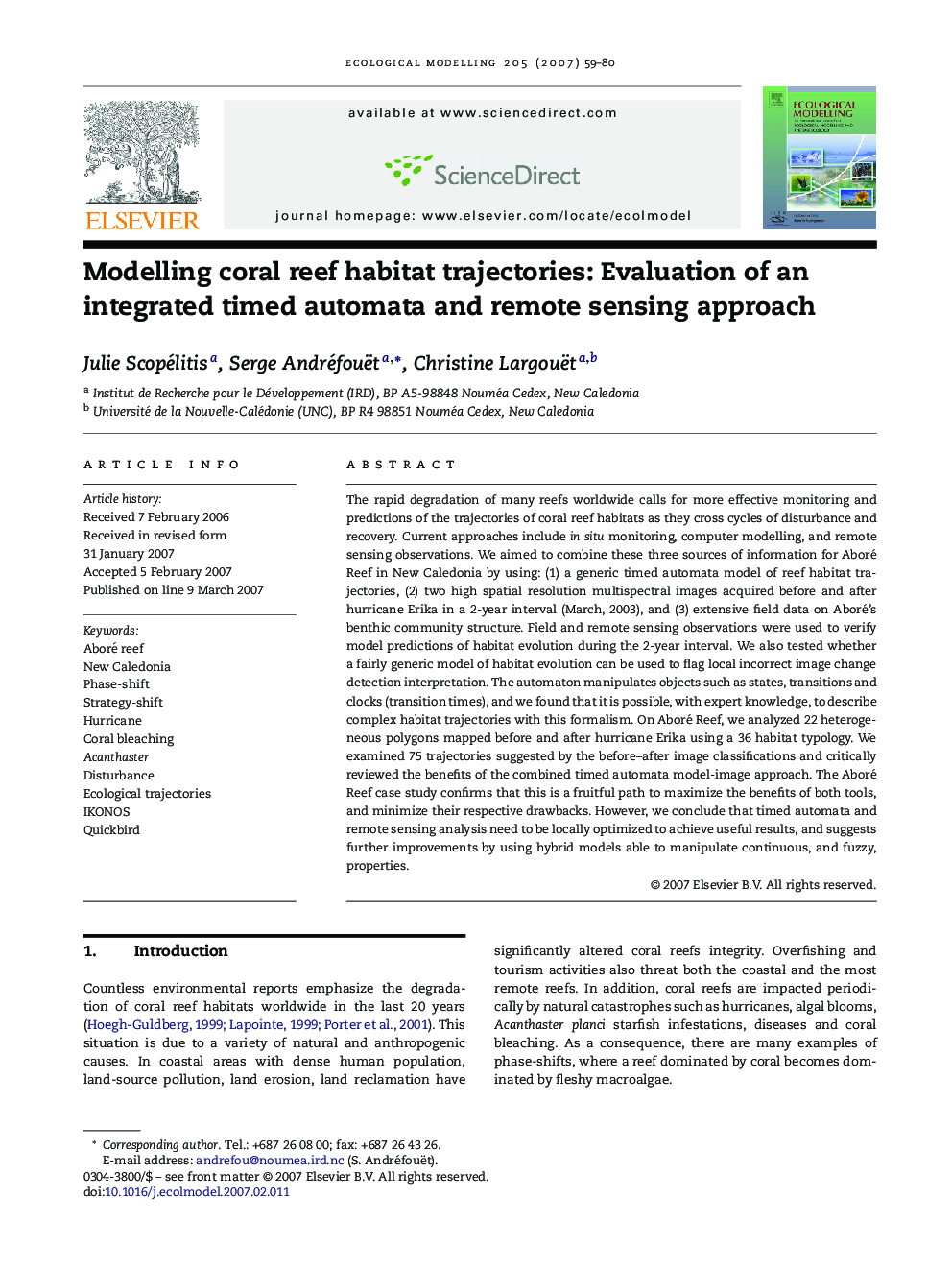| Article ID | Journal | Published Year | Pages | File Type |
|---|---|---|---|---|
| 4378603 | Ecological Modelling | 2007 | 22 Pages |
The rapid degradation of many reefs worldwide calls for more effective monitoring and predictions of the trajectories of coral reef habitats as they cross cycles of disturbance and recovery. Current approaches include in situ monitoring, computer modelling, and remote sensing observations. We aimed to combine these three sources of information for Aboré Reef in New Caledonia by using: (1) a generic timed automata model of reef habitat trajectories, (2) two high spatial resolution multispectral images acquired before and after hurricane Erika in a 2-year interval (March, 2003), and (3) extensive field data on Aboré's benthic community structure. Field and remote sensing observations were used to verify model predictions of habitat evolution during the 2-year interval. We also tested whether a fairly generic model of habitat evolution can be used to flag local incorrect image change detection interpretation. The automaton manipulates objects such as states, transitions and clocks (transition times), and we found that it is possible, with expert knowledge, to describe complex habitat trajectories with this formalism. On Aboré Reef, we analyzed 22 heterogeneous polygons mapped before and after hurricane Erika using a 36 habitat typology. We examined 75 trajectories suggested by the before–after image classifications and critically reviewed the benefits of the combined timed automata model-image approach. The Aboré Reef case study confirms that this is a fruitful path to maximize the benefits of both tools, and minimize their respective drawbacks. However, we conclude that timed automata and remote sensing analysis need to be locally optimized to achieve useful results, and suggests further improvements by using hybrid models able to manipulate continuous, and fuzzy, properties.
